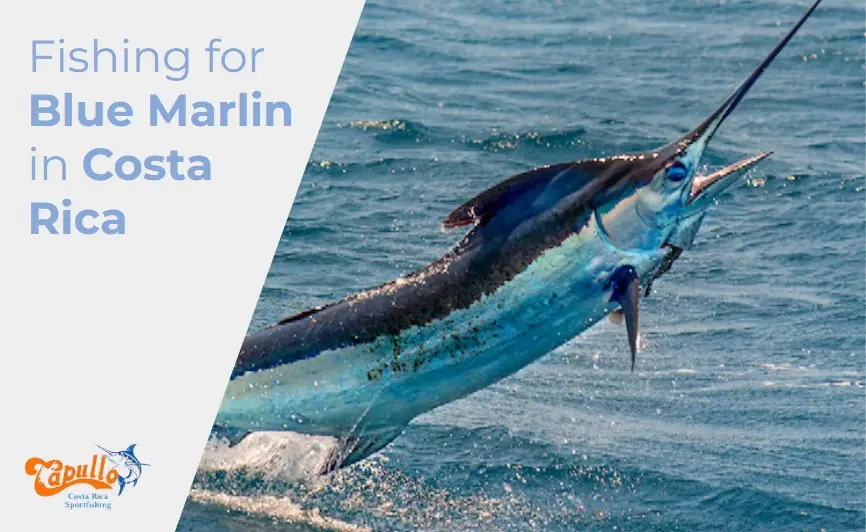
Rooster Fish: Catching and Understanding Rooster Fishing in Costa Rica 2023
The Pacific Blue Marlin is regarded as one of the most esteemed gamefish in the world. Dominating the Pacific and Indian Oceans, it offers anglers a long and challenging battle — if they’re lucky enough to hook one of course!
Beyond its status in sportfishing, the Blue Marlin symbolizes significant conservation and research efforts, highlighted by initiatives like those of the Billfish Foundation. In Costa Rica, it’s crucial to adhere to catch and release practices, ensuring these magnificent creatures flourish for generations.
If you are looking to boost your odds of catching a Blue Marlin in Costa Rica, without worrying about choosing the perfect location or getting the right equipment, book a charter trip with Capullo sportfishing charter, located in Guanacaste Province, Costa Rica.
For more information call: +1 506-8569-3516
From US or Canada you have to dial +11 506 8569 3516
Table of Contents
What is a Blue Marlin?
The Indo-Pacific Blue Marlin, taking its name from the Spanish word commonly used for large-finned fish, is instantly characterized by its elongated body, deep cobalt blue back, and long sword-like bill. It is believed the Marlin name comes from the “marlinspike” – a tool historically used to splice, open, or repair ship ropes.
The Blue Marlin is a member of the “Istiophoridae” family, which is part of the broader billfish group. The taxonomy, or classification of the Indo-Pacific blue marlin (M. mazara) and the Atlantic blue marlin (M. nigricans) as distinct species is debated. While some genetic data suggest they might be the same species, other studies highlight notable genetic differences between the two populations, complicating the debate. This fish’s unique attributes and classification nuances reflect the depth and diversity of marine life in Costa Rica and beyond.
What does a Blue Marlin look like?
The Blue Marlin is characterized by its elongated body, large bulging eyes, and a pronounced dorsal fin pointed at the front. Its most distinctive feature is its long, spear-shaped upper jaw, often called a bill or beak, reminiscent of a marlin’s spike.
The body boasts a deep cobalt blue shade on the top that gracefully fades to silvery white on the bottom. The Indo-Pacific Blue Marlin might also exhibit light blue or lavender vertical stripes on its sides. Its body is covered in embedded scales with sharp pointed ends.
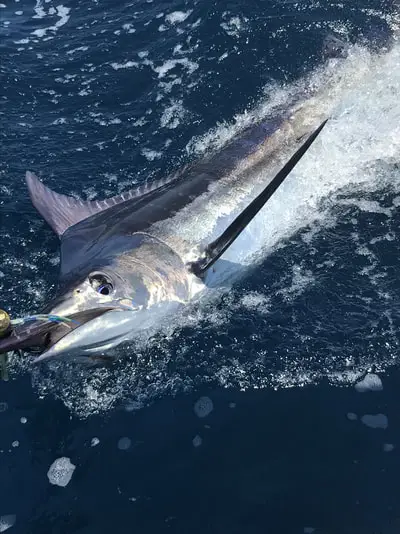
How big are Blue Marlin fish?
Blue Marlins begin their life journey as tiny larvae, measuring only a few millimeters long. They experience a swift growth spurt thereafter, reaching a length of about 11 feet or roughly 3.5 meters. Their weight typically ranges between a substantial 240-400 lbs (108-180 kg). Their body height stands between 10”-23” (25.4-58.4 cm). Females are notably larger, growing 3 to 4 times bigger than the males, which usually reach around 7 feet. Exceptionally, some Marlins can stretch up to 16 feet (5 meters) in length.
The largest Blue Marlin caught on record was made by Jay de Beaubien in Hawaii in 1982, with the Blue Marlin weighing in at 1,376 pounds and spanning 193 inches.
Where can Blue Marlin be caught?
Blue Marlin are widely distributed across the tropical and subtropical waters of the Atlantic, Pacific, and Indian Oceans. They are found ranging from New England to the Gulf of Mexico in the Atlantic, southern California to Chile and even Hawaii in the Pacific. They thrive in warm surface waters with consistent temperature and salinity.
Blue Marlin migrate a lot throughout the year, traveling to warmer regions to escape cooler water temperatures during cycles. They predominantly favor deep oceanic water between 100-500 feet below surface and rarely approach shallow nearshore waters.
What are the best places to catch Blue Marlin in Costa Rica?
In Costa Rica, Blue Marlin can be caught along the Pacific Coast. Especially in the Southern and Central Pacific regions like the Osa Peninsula, Quepos, Jaco, and the northwestern part of Guanacaste.
Do you need a boat to catch Blue Marlin fish in Costa Rica?
Yes, you’ll need a boat to catch Blue Marlins in Costa Rica due to their preference for deep offshore waters. For the optimal fishing experience in Costa Rica, consider booking a Blue Marlin fishing charter trip, like those offered by charter companies like Capullo Sports Fishing Charters. On board our fishing charters, you’ll have a higher chance of catching a blue marlin with specialized boats, premium fishing gear, bait, expert captains, and a professional crew ensuring an unforgettable experience.
What is the best time of year to catch Blue Marlin in Costa Rica?
Blue Marlin, being pelagic creatures, are attracted to the warm currents of Costa Rica’s offshore waters. Throughout the year, various regions of Costa Rica’s coastlines offer these ideal temperatures ranging between 70°F and 87°F.
The prime months to catch Blue Marlin in Costa Rica are January-February, June-July, and December. Specifically, the North Pacific coast sees them in abundance from November to March. Meanwhile, the Central Pacific coast’s peak season spans from September to November, and the Southern zone flourishes from August to December.
What is the best time of day to catch Blue Marlin in Costa Rica?
Blue marlin are most active during the morning hours and feed actively during the last few hours of the incoming tide. Fishing for Blue Marlin is especially productive around the full moon and during the daytime, especially when the sun is high, due to their reliance on vision for hunting.
What other types of Marlin can be caught in Costa Rica?
When fishing in Costa Rica, anglers can also encounter Striped Marlin and Black Marlin. However, the Blue Marlin is the most commonly caught species of Marlin on the Pacific side of Costa Rica.
How to catch a Marlin fish?
- Location and Timing: Begin by identifying deeper waters ranging between 100-500 feet. Blue Marlin tend to frequent these depths, especially in areas with water-temperature breaks and color changes. Although night fishing is advantageous, the success with trolling spans both day and night.
- Equipment Suited for Trolling: It’s crucial to arm yourself with industrial-grade equipment designed specifically for trolling. This includes robust reels and rods that can withstand the Marlin’s immense strength. Your tackle must be equally resilient; opt for leaders with a breaking strength between 150-300 pounds and use 10/0 to 12/0 circle hooks ideal for trolling techniques.
- Bait and Lures for Trolling: For the trolling technique, live baits like bonito, yellowfin tuna, dolphin, mullet, and mackerel prove highly effective. Don’t forget squids, both live and artificial. Additionally, rubber skirted trolling lures and other skirted varieties are instrumental for trolling, mimicking the movement and appearance of real fish.
- Mastering the Trolling Technique: The essence of catching Blue Marlin lies in the art of trolling. Maintain a speed of around 8-10 knots to mimic the natural movement of prey. A spread of diverse lures further enhances chances. Unique methods, involve bridling live baits. In this approach, floss is threaded through a baitfish, followed by securing a circle hook at its head. This configuration is designed so that when the Marlin consumes the bait, the hook emerges from its stomach and firmly settles in the marlin’s jaw hinge as tension is introduced.
- Reacting to a Marlin Strike while Trolling: Trolling requires keen observation of the line’s movements and the behavior of the bait. Upon sensing a Blue Marlin strike, immediately set your reel to free-spool. This lets the Marlin ingest the bait. After waiting for 5-10 seconds, gradually apply pressure. This moment marks the beginning of a thrilling battle as the Marlin counters the hook’s force.
What gear do you need to catch a Blue Marlin?
To catch a Blue Marlin, you’ll require specific gear. A standard line for marlin is a 100-pound monofilament, paired with an 80-class range reel featuring a lever drag. For smaller marlins under 100 pounds, a 12-weight rod suffices, but larger ones necessitate a 14 or 16-weight rod. Your bait choices are vast, including bonito, dolphin, mackerel, and even squid, while rubber-skirted trolling lures can enhance your success rate. Acquiring all this equipment can be pricey, but opting for a fishing charter can significantly reduce costs as they often provide necessary gear and expertise.
Catch a Blue Marlin with Capullo in Tamarindo.
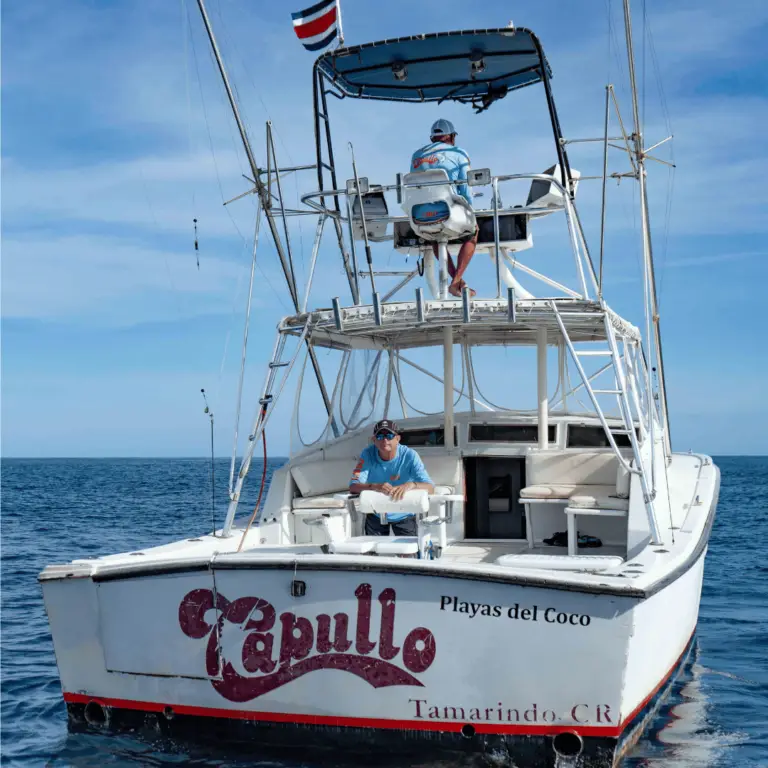
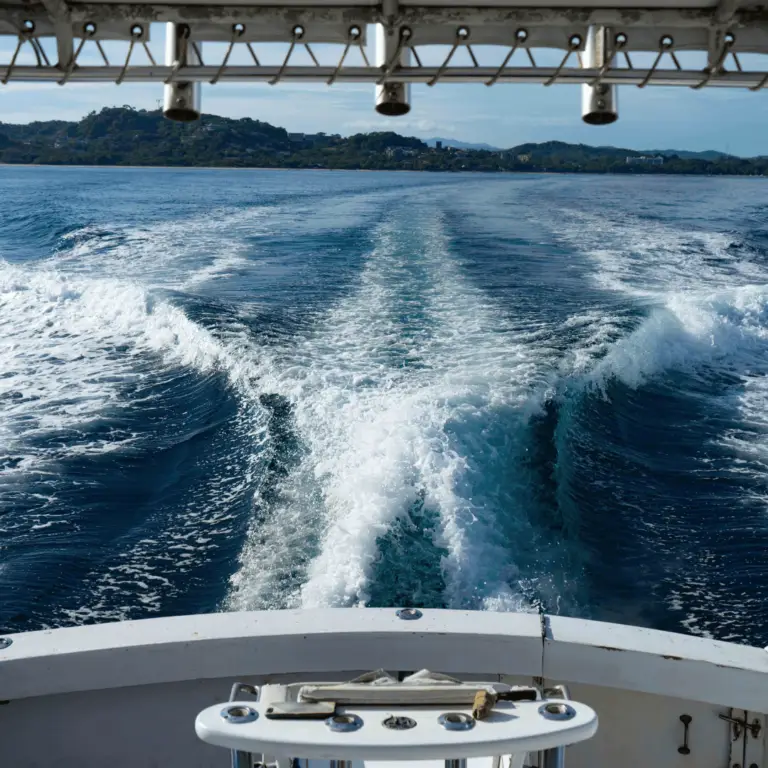
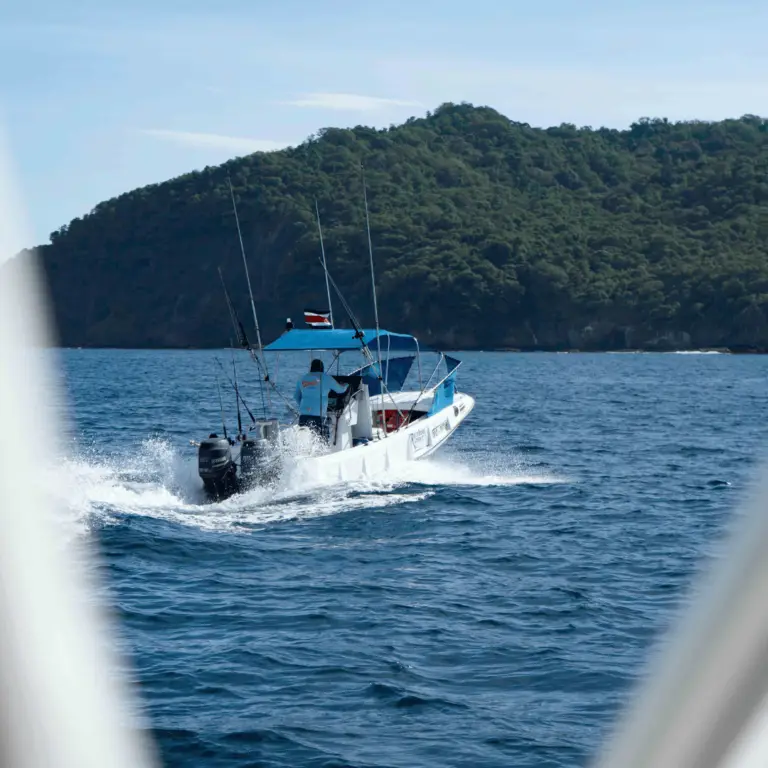
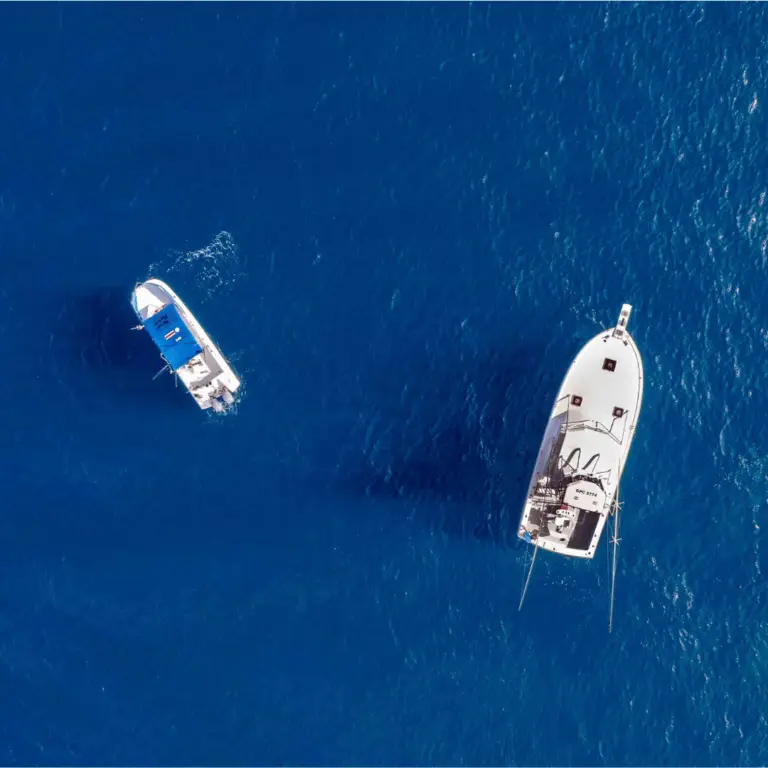
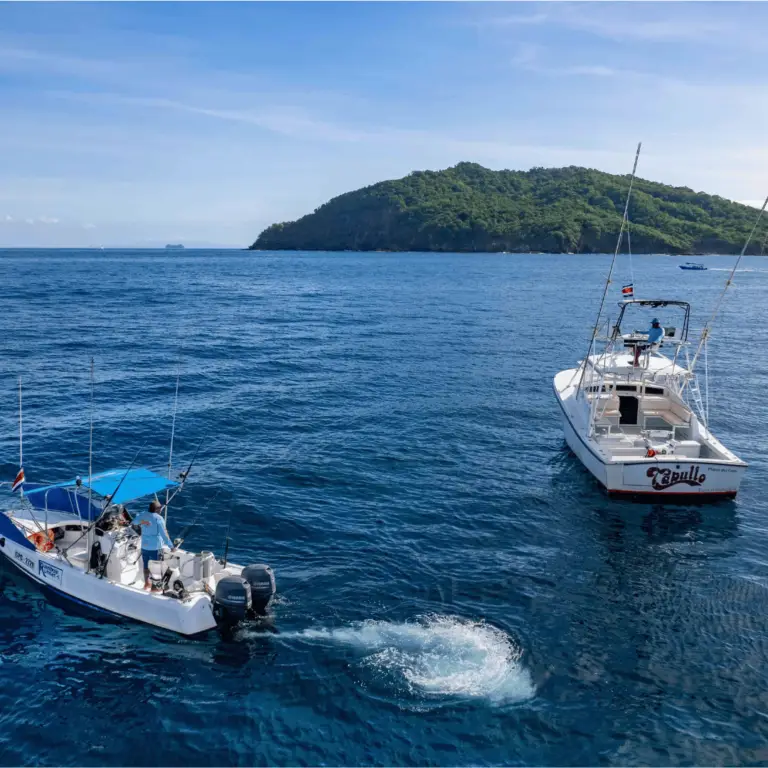
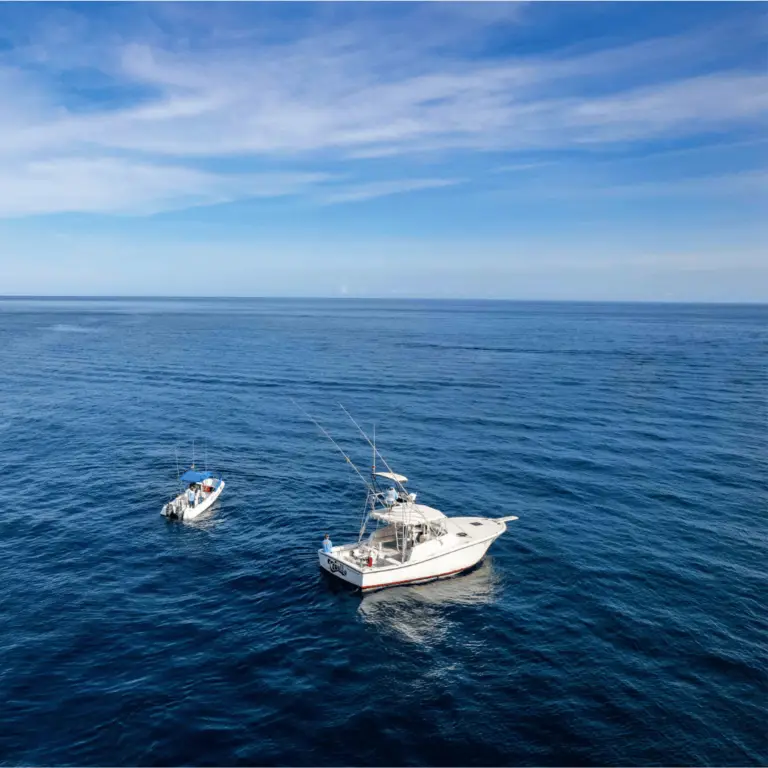
Are Blue Marlin hard to reel in?
Yes, Blue Marlins are exceptionally challenging to reel in. When hooked, they exert a profound pull. The initial bite is so forceful that anglers often need to swiftly reel up to manage the tension on their line and avoid breakage.
Engaging in a tug of war-with these creatures can extend up to 45 minutes or longer, especially with larger specimens. The combination of their incredible strength, speed, and acrobatic prowess makes landing a Blue Marlin a monumental achievement in sportfishing.
What are the chances of catching a Blue marlin fish in Costa Rica?
For many anglers in Costa Rica, catching a Blue Marlin is still a dream. Even in perfect conditions, the odds of catching a Blue Marlin on a fishing boat are less than 5%. These beautiful fish are incredibly rare and are regarded as trophy fish.
Does Costa Rica allow you to keep Blue Marlin fish once caught?
There is a “catch and release” policy in place for Blue Marlin in Costa Rica, making it illegal to remove these fish from the water.
How to release Blue Marlin fish back into water safely?
To release a Blue Marlin fish back into the water safely follow the steps below:
- Expect the fish to be angry.
- Keep its dorsal fin up and belly down.
- Allow the fish to tire itself out.
- Once it stops resisting, begin the process of reviving it.
- Remove the hook.
- As the fish starts to calm down, move it back and forth in the water.
- This motion helps get water through the gills, aiding in its revival.
- Wait for the bio luminescence to return to the fish before letting it go.
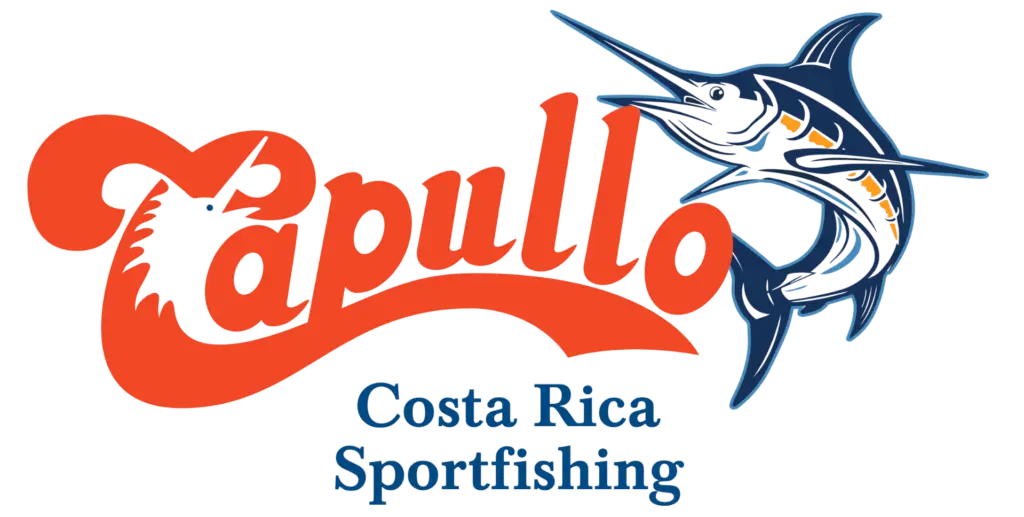
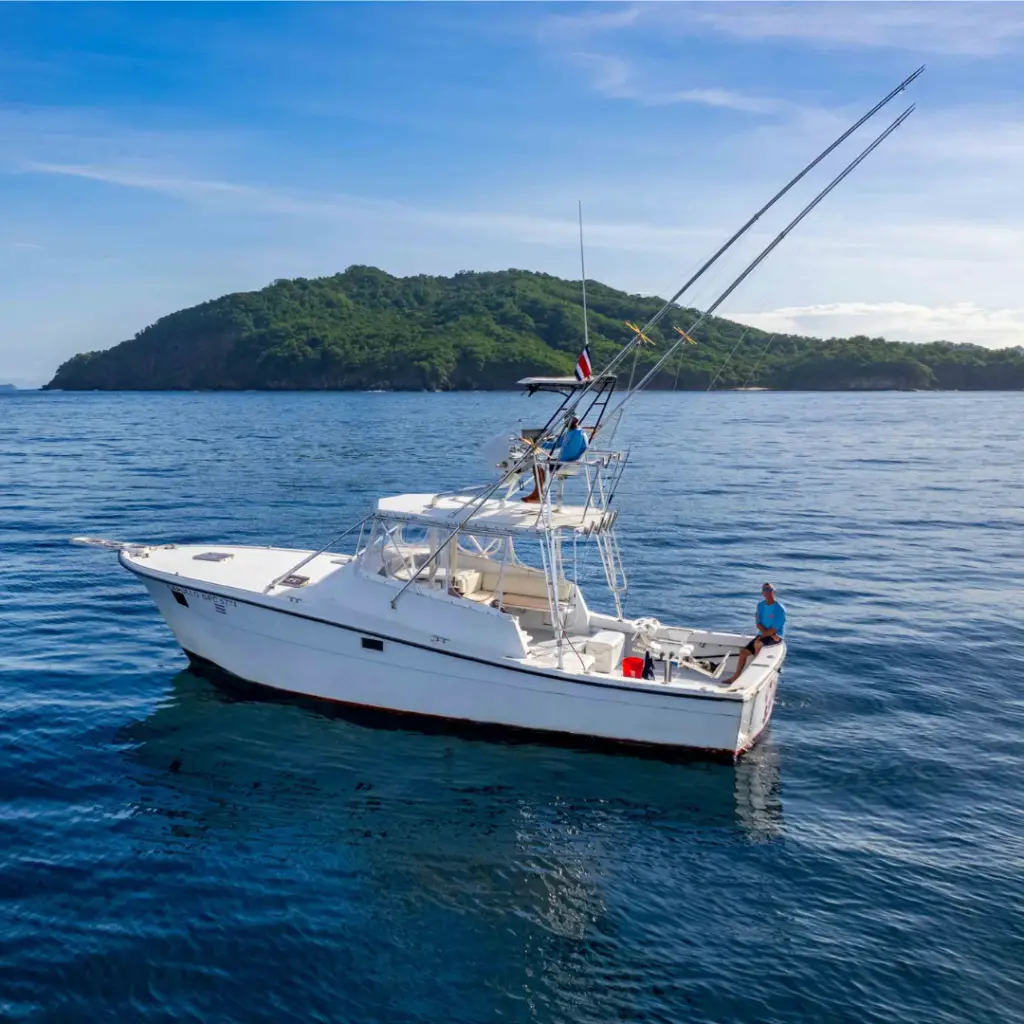
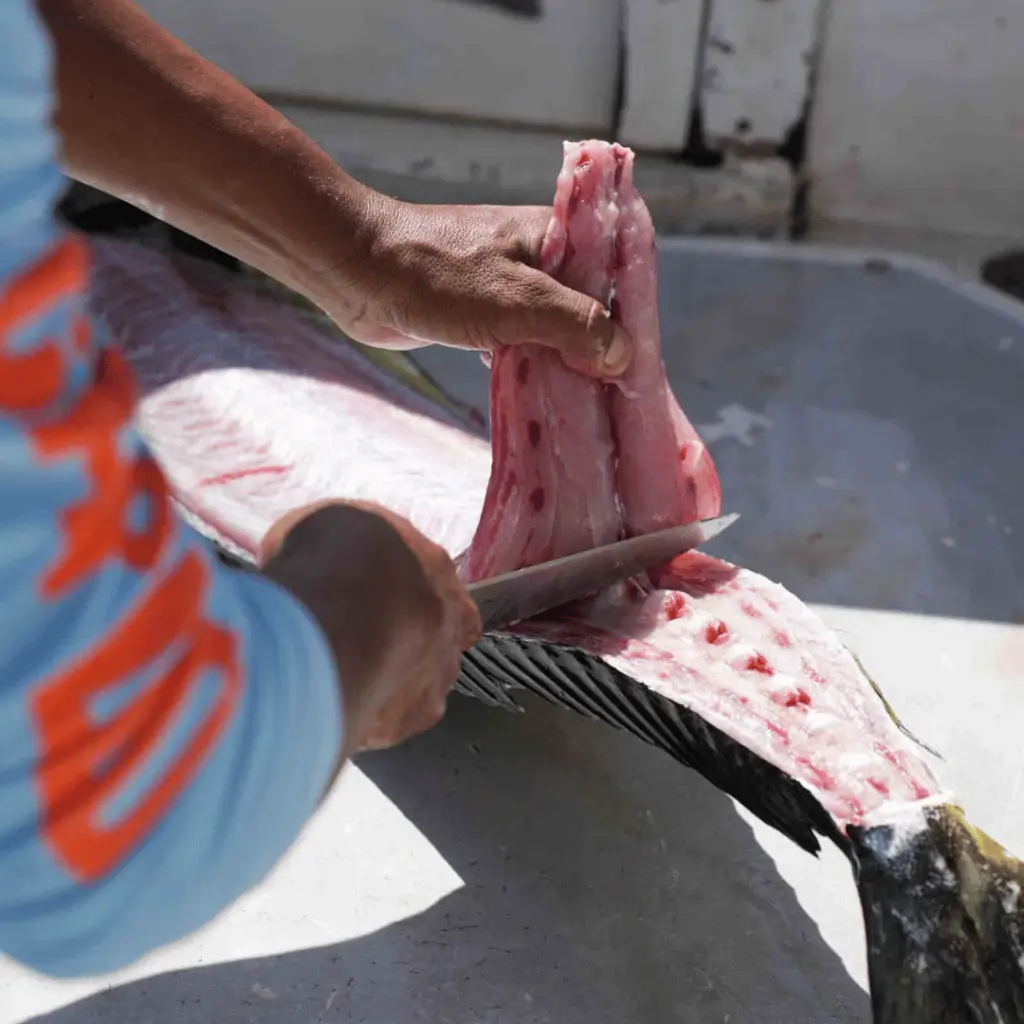
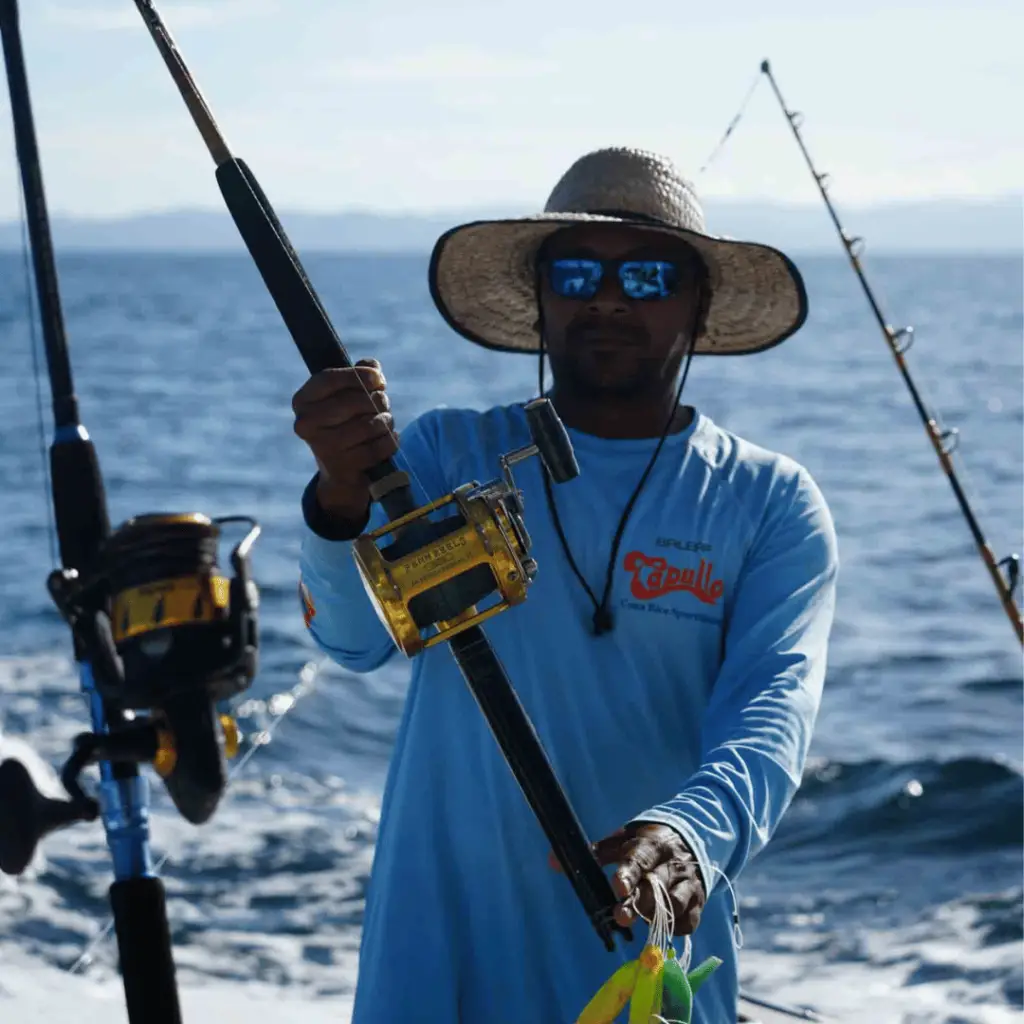
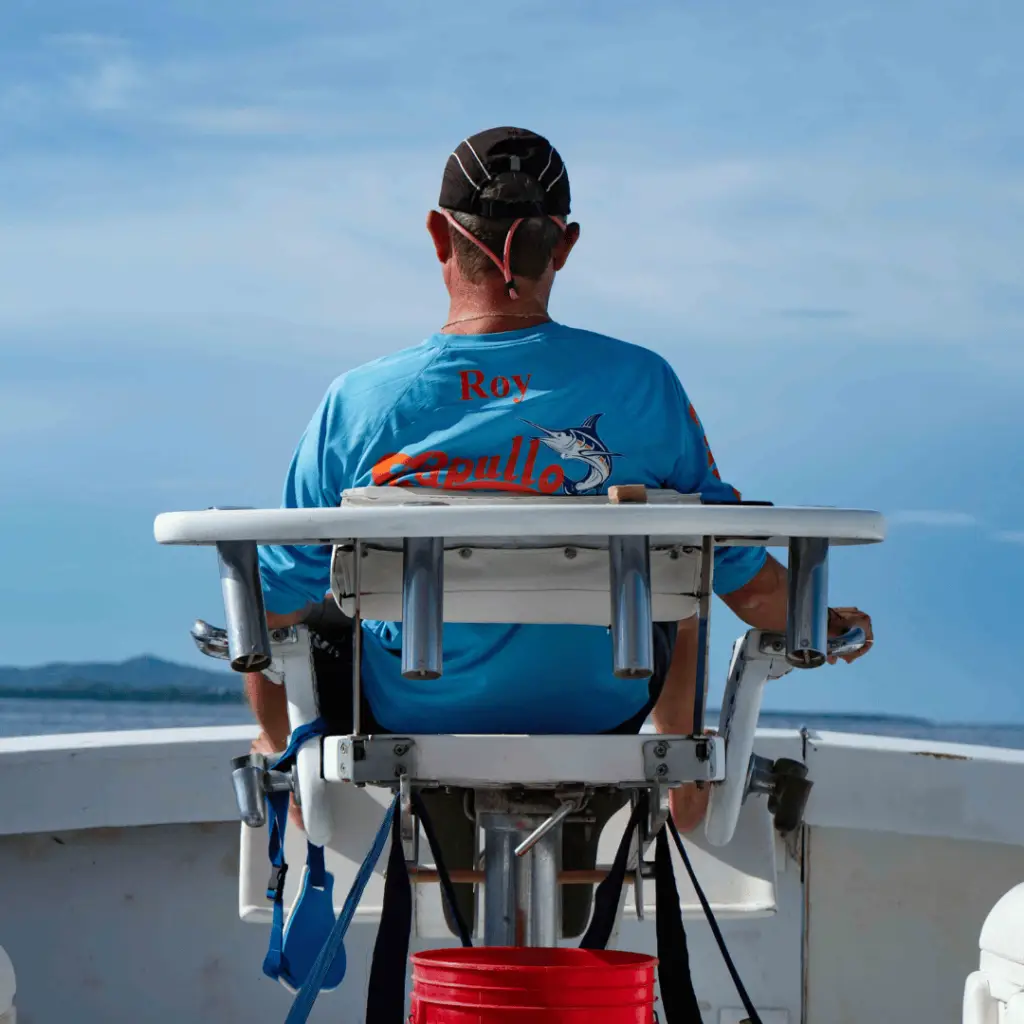
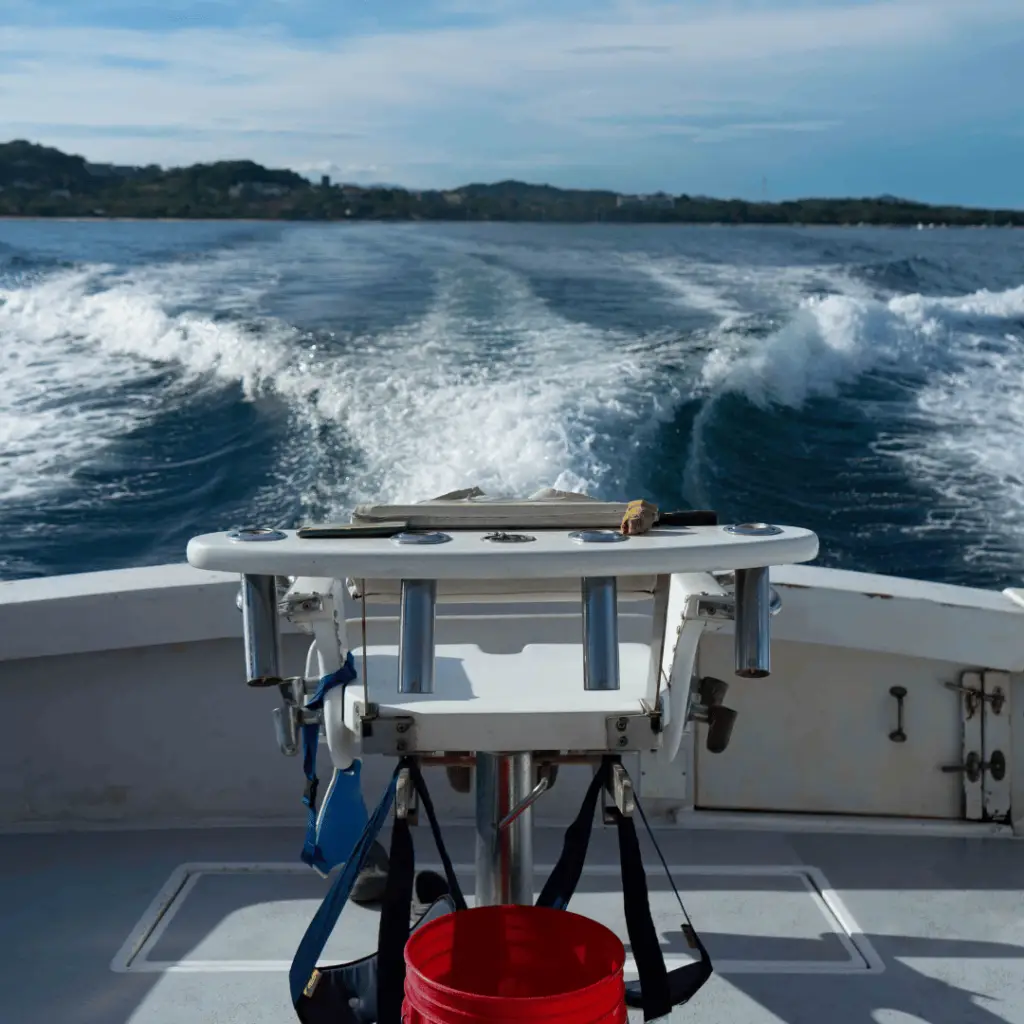
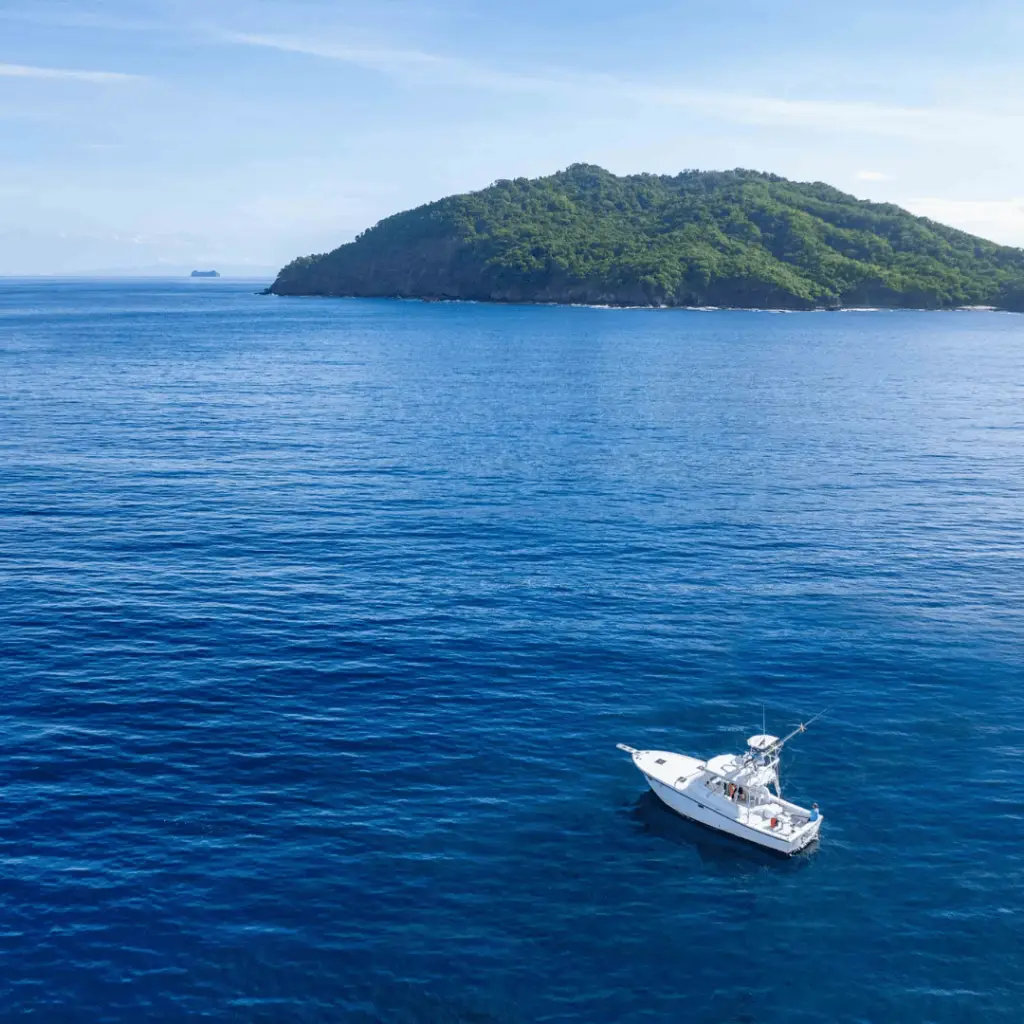
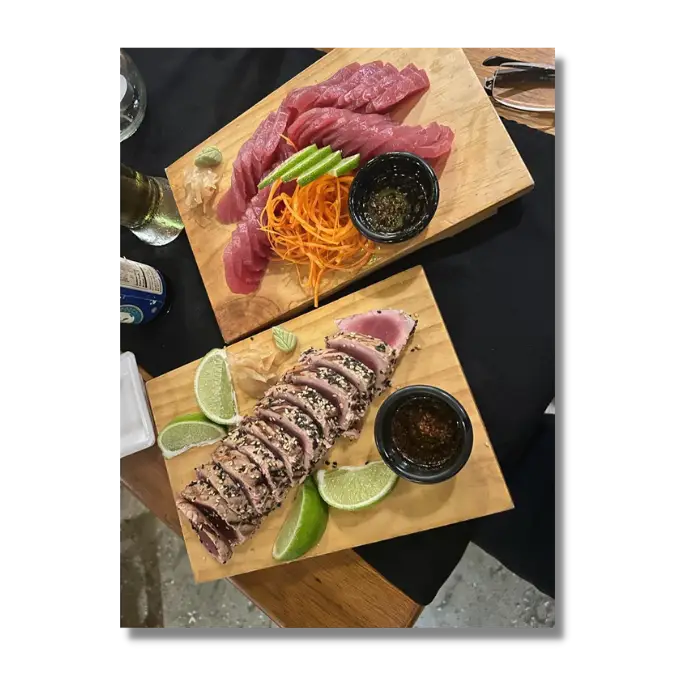
FAQ:
How fast does a Blue Marlin swim?
Typically, Blue Marlin swim at speeds around 50 mph (80 kph), but they have the capability to accelerate up to 68 mph (110 kph).
How long do Blue Marlin live for?
Blue Marlin have varying lifespans based on their gender. Indo-Pacific Blue Marlin females can live up to 20 years, while males have a shorter lifespan, reaching up to 10 years.
What do Blue Marlin eat?
Blue Marlin primarily feed on a variety of pelagic fishes, including tuna, mackerel, dolphin, skipjack, bonito, and flyingfish. They also have a penchant for squid, diving deep to consume cephalopods when the need arises.
Where do Blue Marlin breed?
Blue Marlin breed in the open waters of the Indian and Pacific Oceans, with spawning taking place during the summer. In the southern hemisphere, they are believed to spawn around French Polynesia.
They reproduce through external fertilization: females release their eggs into the water column, and males release their sperm. Fertilization occurs in the surrounding water when the sperm encounters the eggs.
Do Blue Marlin sleep?
Blue Marlin do not appear to sleep, as they must constantly swim to pump water over their gills and obtain oxygen.
Is Blue Marlin fish edible?
Blue Marlin is edible and is even seen as a delicacy in Japan. However, in countries like Costa Rica, it’s mainly valued as a gamefish and is often protected. If you’re thinking of eating it, be cautious: Blue Marlin has high mercury levels that can be above safe limits.
Are Blue Marlin endangered?
According to the 2021 stock assessment, Pacific blue marlin is not overfished and not subject to overfishing. Summary stock assessment information can be found on Stock SMART.
How can you tell the difference between Marlin species?
Black Marlin have a dark blue or black back with rigid pectoral fins and a shorter dorsal fin. Blue Marlin sport less distinct stripes that fade and a round, pointed bill, distinguishing them from the flat-billed swordfish. Striped Marlin are identified by their blue vertical stripes and dark silver sides, while White Marlin are smaller, lighter in color with spots, and have larger dorsal fins.
Is there a Blue Marlin fishing tournament in Costa Rica?
Yes, there is a Blue Marlin fishing tournament in Costa Rica called the Pelagic® Pura Vida Blue Marlin Classic. It takes place in Quepos, Costa Rica. The last one was scheduled to be held from March 24 to March 27, 2022, at Marina Pez Vela.
How many points is a Blue Marlin worth in Sportsfishing?
In the famous Pelagic® Pura Vida Blue Marlin Classic, points are scored as follows:
Blue Marlin = 500 points per release
Black Marlin = 250 points per release
Striped Marlin = 100 points per release
Sailfish = 1 point per release
